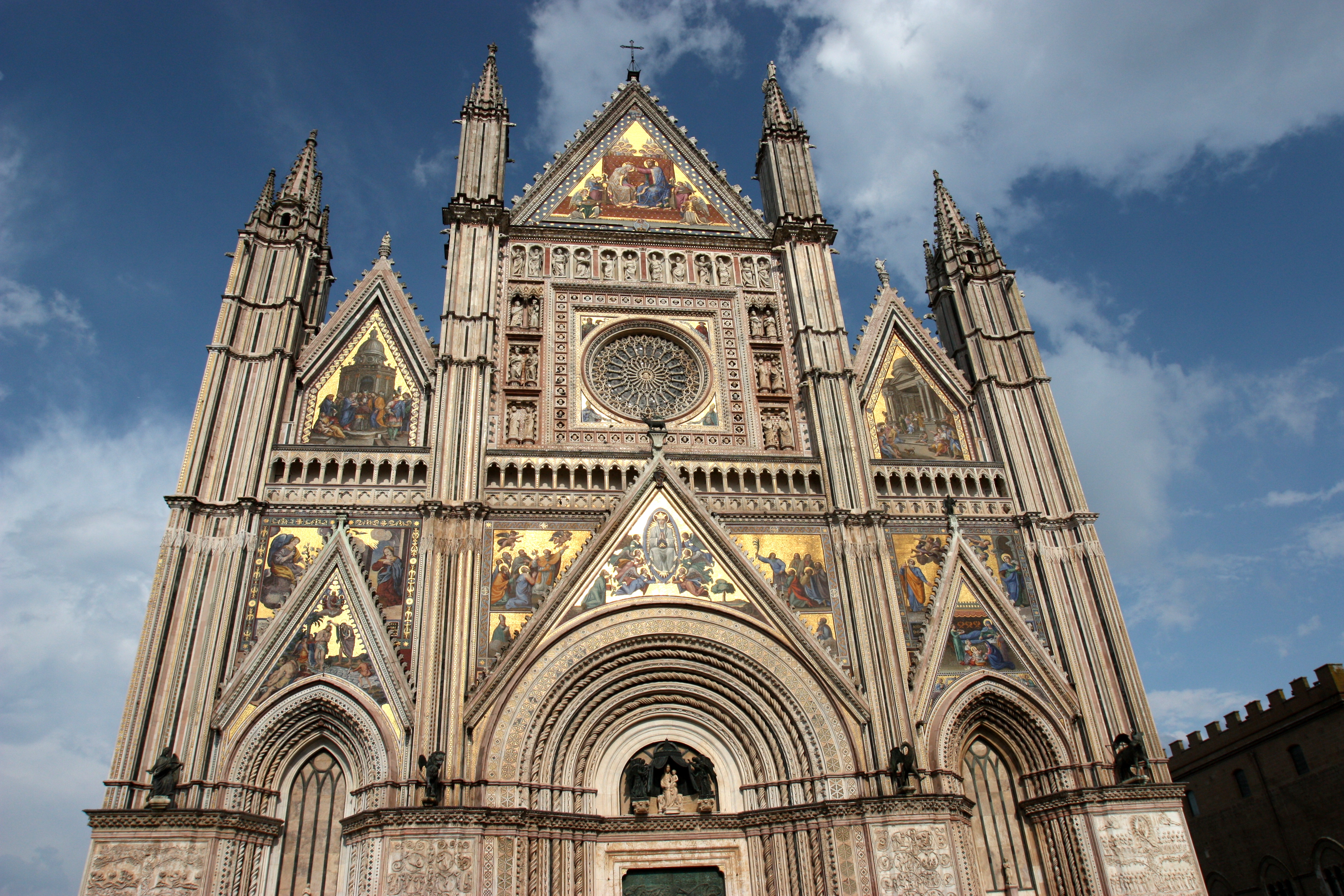Orvieto and Civita di Bagnoreggio

Orvieto
Remarkable example of Romanesque and Gothic art, Orvieto is known for the Cathedral, built towards the end of 1200 by order of Pope Nicholas IV.
The Duomo was used to the placement of the Corporal of the miracle of the Eucharist miracle happened in Bolsena in 1263.
A hit from the outside is the harmonious slaciamento up, the facade triptych, the central rose window and the portal, the style that is both majestic and baroque but in any case not codified and therefore unique and extremely original.
Particularly noteworthy frescoes on Judgement artist Signorelli.
Orvieto is also famous the Pozzo di San Patrizio which dates from 1500, a true masterpiece of engineering: deeper than 50 meters, a diameter of 13 meters, the well was made in tuff; lit by 70 windows, the well riscorda the cave of St. Patrick’s Purgatory in Ireland from which it takes its name
Civita di Bagnoregio
Civita has extremely particular the fact that it is accessible only by a bridge that can be crossed only by pedestrians.
To isolate Civita was the gradual erosion of the valley that surrounds it; hence the name “the dying city”.
Civita was born in about 500 a.c. by the Etruscans whose testimonies consist of the urban structure in general, but more specifically by a tunner that connects the lower part of said “Bucaione”, the cave of San Bonavenura and a small cemetery that is located in a cliff.
Among the places of artistic interest the chisa of San Donato, which houses the SS Wooden crucifix, the Port of Santa Maria, the home of St. Bonaventure and the Bishop’s Palace
























